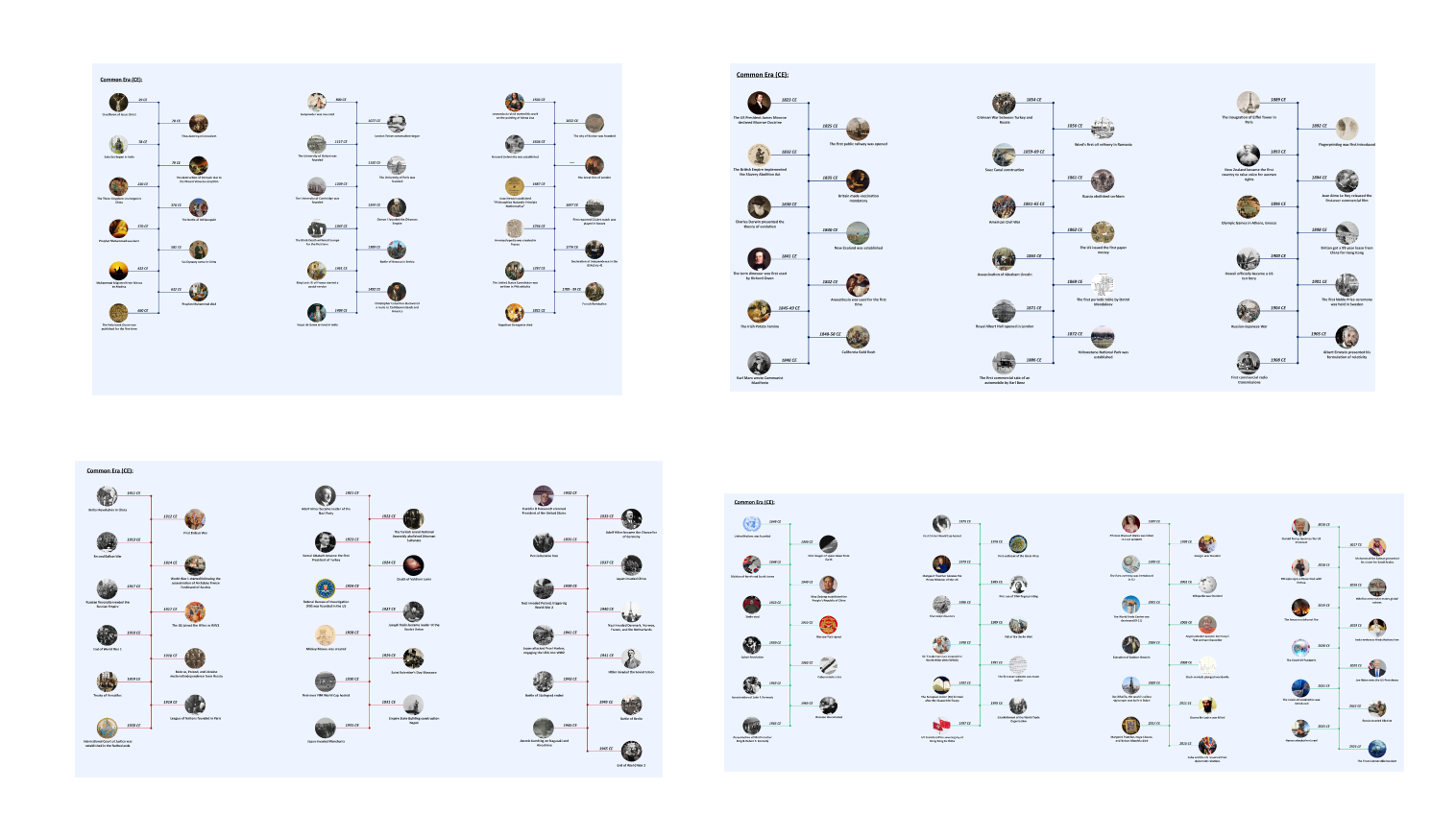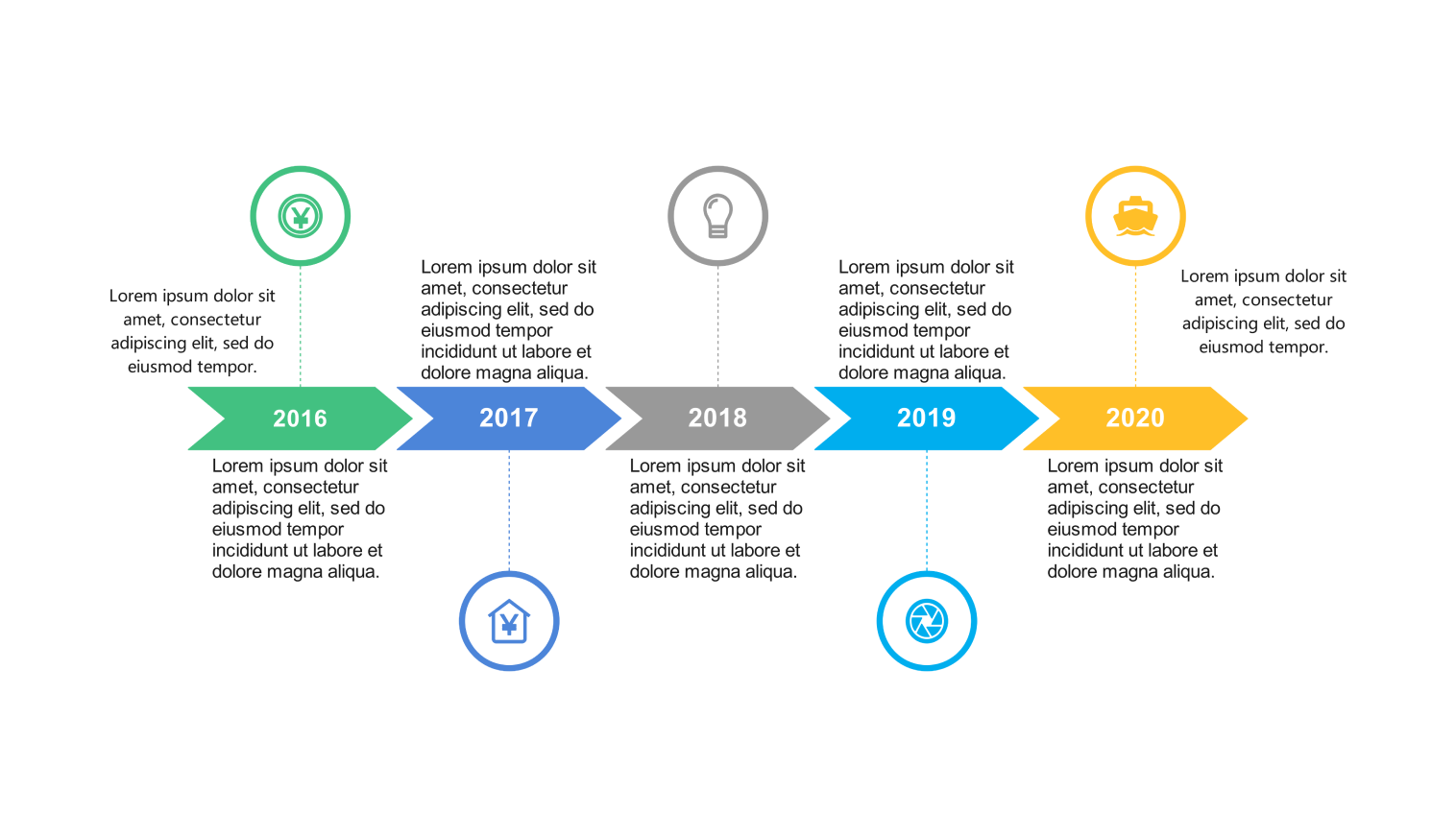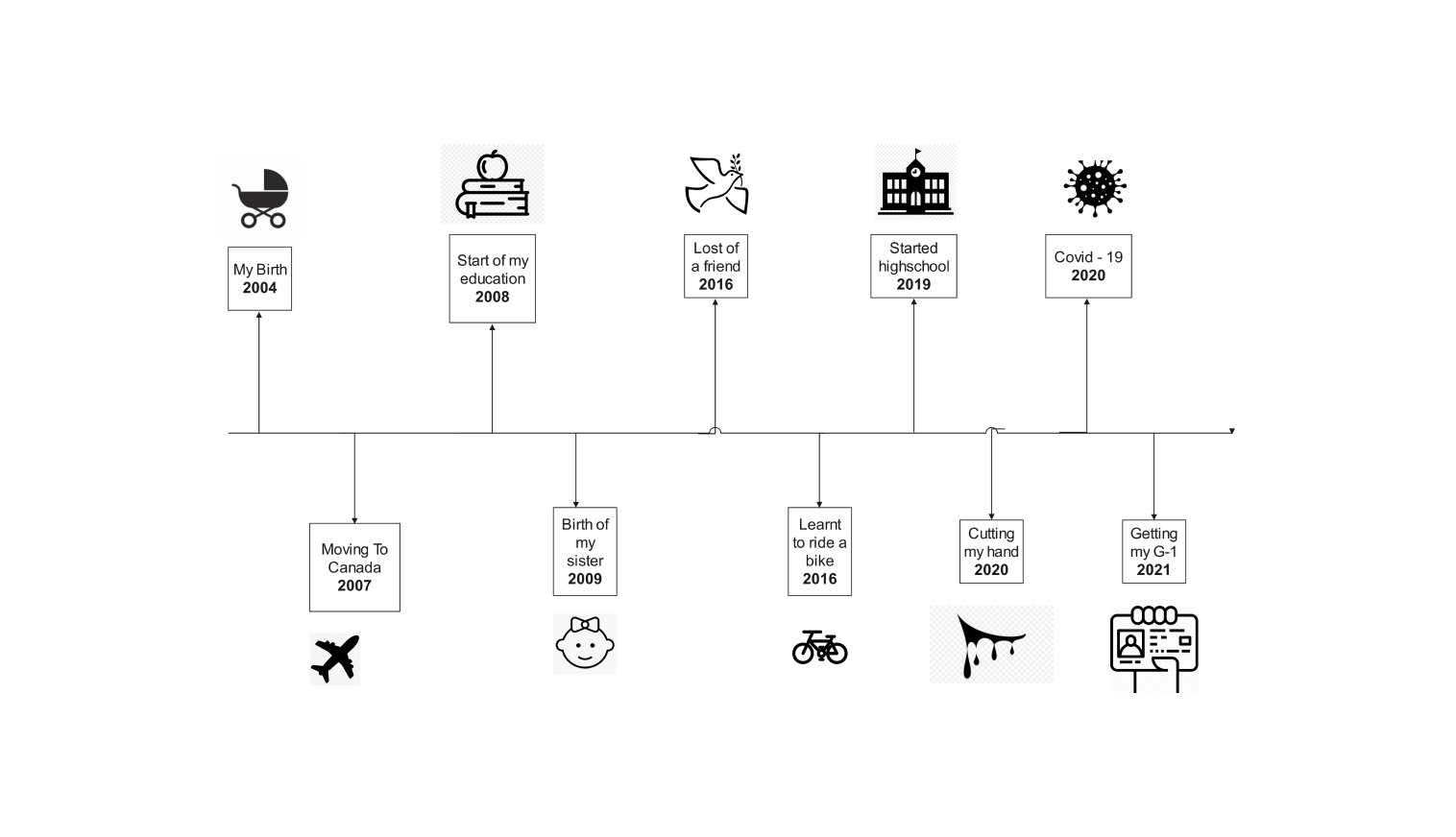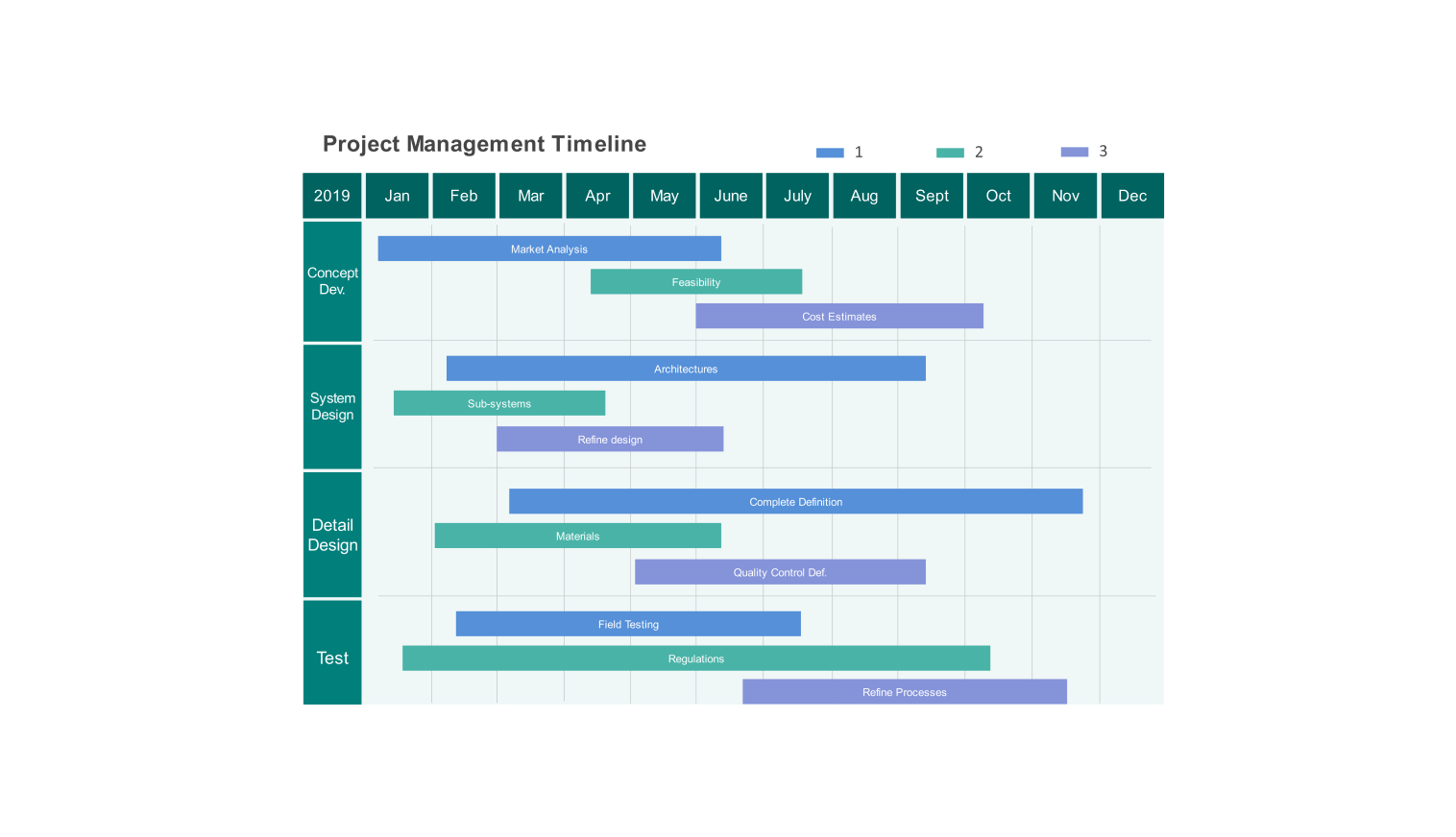- Templates
- Timeline templates
- World history timeline
About this template
This world history timeline gives a comprehensive overview of world events. It also gives you pictures you can reference when visualizing past events. Using this template, you can annotate and add more information beside and after each world event.
The timeline dates back to 10,000 BCE, from the first time humanity learned to domesticate goats. Then, it outlines what happened as humans began to form society: settled farming in 9500 BCE, the discovery of copper in 6000 BCE, and the Iron Age (2000-1200 BCE).
It also marks important early civilizations worldwide—for example, the evolution of the Sumerian Civilization as early as 5000 BCE is indicated here. The Indus Valley civilization (2600 BCE), the Zhou dynasty in China (1027 BCE), the Persian Empire (653 BCE), and other essential civilizations are also included.
The timeline also provides dates for essential inventions or discoveries. For example, the first calendar in 5000 BCE and the first signs of writing in 3000 BCE are outlined. It also explains when the early signs of alphabetic writing were first made (1800 BCE).
You can also see some parts of ancient history that are often studied in school. For instance, the timeline shows that Homer wrote the Iliad and Odyssey around 850 BCE and that the famous Greco-Persian Wars occurred in 499 BCE. These are essential events in the world that have remained studied until today.
Some essential ideologies are also shown in this timeline. For example, it shows the introduction of democracy in Athens in 508 BCE. This would lay the foundation for most countries’ form of government today. Further, it even includes the events surrounding Christianity and Jesus (4 BCE – 29 CE).
You can also see how the timeline lays down important revolutions and wars in world history. The French Revolution (1789-1799 CE), the Napoleonic Wars (1803 CE onwards), and, of course, the World Wars (1914 CE and 1939 CE) are laid down in this comprehensive timeline.
Then, it will lead you to 20th-century events like the founding of the People’s Republic of China (1949 CE), the Warsaw Pact (1955 CE), and the Space Age in 1957 CE. Other events like the assassination of JFK (1963 CE) and Martin Luther King, Jr. (1968 CE) are laid out, too.
These events go further until you reach the present day, which even reaches up to the recovery of the world from the COVID-19 Pandemic in 2022 CE. Even recent events such as the #MeToo Movement in 2017 CE, the death of Nelson Mandela in 2013 CE, and the founding of Wikipedia (2001 CE) are included.
How to use this template
Click the Use this template.
Edit/annotate the timeline within EdrawMax. You can even customize it accordingly. Drag-and-drop symbols from the elements panel or add texts with the toolbar.
You can change the style/color of some elements by right-clicking on one and using the appearing customization bar.
Once finished, you can export the timeline in formats like SVG, PPT, PDF, or JPG for better viewing or sharing.
Benefits of the world history timeline template
A world history timeline summarizes critical information, especially when studying history courses. This will help teachers arrange their syllabus or students know in which order they should study. Teachers can utilize these tools to guide the student in their studies.
Even history buffs will love this timeline. They can create their personal timelines and annotate them with as much information as possible. Students and teachers can do this, too, as an aid in learning. With EdrawMax, they can even take notes and add information directly to the diagram.
Overall, using a world history timeline helps study the origins of mankind. After all, people should know what happened in the past as part of their formation. Using a timeline will boost this learning experience.
FAQs
-
When did history begin?According to archaeologists, “history” as a practice technically began in 3200 BCE. They discovered ancient Egyptian documents and records about past events. This was considered the first attempt by humans to record history.
-
What is the world history summary?World history cannot be adequately summarized. It is called microhistory – the study of human history across boundaries. World historians examine developments; therefore, you cannot write a summary that encapsulates all the critical historical points. This is why timelines are essential.
-
Who is the father of world history?Many historians agree that Herodotus is the father of history. He was the first person to collect and document events to create an account of what happened in the past.
Related templates
Get started with EdrawMax today
Create 210 types of diagrams online for free.
Draw a diagram free Draw a diagram free Draw a diagram free Draw a diagram free Draw a diagram free




